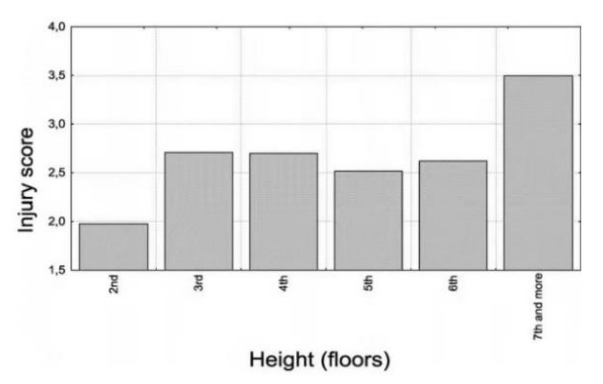News

Time:2022-09-13

Merbl also statistically analyzed the survival rate of cats that fell on different floors: the shaking dropped to less than 50% when the 6-7 floor fell!

The data presented in each paper may have its own limitations due to the inadequacy of the research method and cannot represent the research as a whole.But each set of data is a wake-up call, surging with the fresh life of every cat who fell from the building!
The behavior of dogs when falling from a height is similar to that of humans, so the severity of the injury and the severe life-threatening injury are directly proportional to the height of the fall.
When pets fall from heights, it is easy to cause high-rise syndrome.High-rise syndrome refers to a series of trauma caused by falling from a certain height. Pets living in cities are especially susceptible. According to reports, high-rise syndrome is more common in warmer months, which may be because most petkeeper open windows for ventilation, providing animals with the possibility to go outdoors. In many cases of falling buildings that are not handled in time, the pets who have suffered a lot of tissue damage or have been in shock at the time of treatment are more likely to develop acute traumatic coagulopathy (ATC). Acute traumatic coagulopathy (ATC) is characterized by coagulopathy, which may even continue to bleed. Therefore, the presence or absence of ATC risk should be carefully identified for subsequent careful monitoring and secondary evaluation.
In addition to acute traumatic coagulopathy, pet cerebral thrombosis, disseminated intravascular coagulation, tumor, diabetes, myocardial infarction, hepatitis, liver cirrhosis and other diseases may cause abnormal coagulation function in pets, and it is difficult to treat these diseases. Therefore, regular physical examination, regular monitoring of coagulation function, and early defense are required. When pets need surgery or blood transfusion, the blood coagulation function should be tested before and during treatment to assess and reduce the risk of surgery in a timely manner.
Lansionbio pet veterinary coagulation analyzer LA-100 adopts electrochemical method, which has rapidly testing, high sensitivity, long standby time and easy to install. Only 20μL of peripheral blood/venous blood is needed, and 6 results (APTT, PT, TT, FIB, INR, ACT) can be produced in 8 minutes. LA-100 can comprehensively evaluate the coagulation function and timely screen abnormal coagulation function indicators, which has important guiding significance for the prevention of pet bleeding and thrombosis.